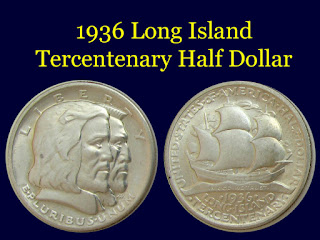In 1636, the area we know as Long Island was settled by Algonquin tribes who settled there to escape more war-like tribes. The Algonquin call the island Paumanok, meaning “The Island that Pays Tribute.” On the arrival of the first Dutch settlers, they negotiated for a section of land just off of what we know as Jamaica Bay. They called the land Lange Eylandt (Long Island) in reference to its 118 mile length, and their settlement was named Breuckelin after a town in Holland. It was the first European settlement on the island.
By 1640, the English Puritans started settling the eastern end, coming down from New Haven, Connecticut. Subsequently, the English began to assert dominion over the region and claimed the propriety. In 1694, the English renamed the land as Long Island, the original Dutch Settlement became Brooklyn, and the Dutch colony founded on Manhattan Island was renamed as New York.
After 300 years, the United States was in a depression but collectors were being inundated with commemorative coins. In 1936, 16 new designs were issued and five others had not reached their authorized mintage. However, the Long Island Tercentenary Committed lobbied for a commemorative coin to coincide with the 300th anniversary of the first European settlement in May, 1936. But the bill allowing the mintage of 100,000 coins was not passed until April 13 of that year.
 The coin was designed by Howard Kenneth Weinman, the son of Adolph A. Weinman. To honor the settlement, the obverse features a right-facing bust of a Dutch colonist overlapping a bust of an Algonquin tribesmen. The reverse features a 17th-century ship under full sail traveling over a rolling sea. Because maps showed west-to-east passages as being from right-to-left, critics noted that the right-facing ship appeared to be heading back to Holland. Howard Weinman’s placed his initials under the the Algonquin’s chin by placing an H atop of the letter W, which was similar to the way his father included AW on his coin designs. In passing, the monogram could be mistaken for the elder Weinman’s.
The coin was designed by Howard Kenneth Weinman, the son of Adolph A. Weinman. To honor the settlement, the obverse features a right-facing bust of a Dutch colonist overlapping a bust of an Algonquin tribesmen. The reverse features a 17th-century ship under full sail traveling over a rolling sea. Because maps showed west-to-east passages as being from right-to-left, critics noted that the right-facing ship appeared to be heading back to Holland. Howard Weinman’s placed his initials under the the Algonquin’s chin by placing an H atop of the letter W, which was similar to the way his father included AW on his coin designs. In passing, the monogram could be mistaken for the elder Weinman’s.
Since 2008 will be the year I concentrate my collecting on items related to the areas once called New Amsterdam and Lange Eylandt, it was time to find a nice Long Island Tercentenary commemorative for the collection, I wanted to find a nice, even colored, mint state example. With a net mintage of 81,773 coins sold during the year after its release, I knew I would be able to find a nice example. The one I found was graded as MS60 by the dealer and purchased for a good price. It is a beautiful coin to add to the growing New York/Long Island collection.

